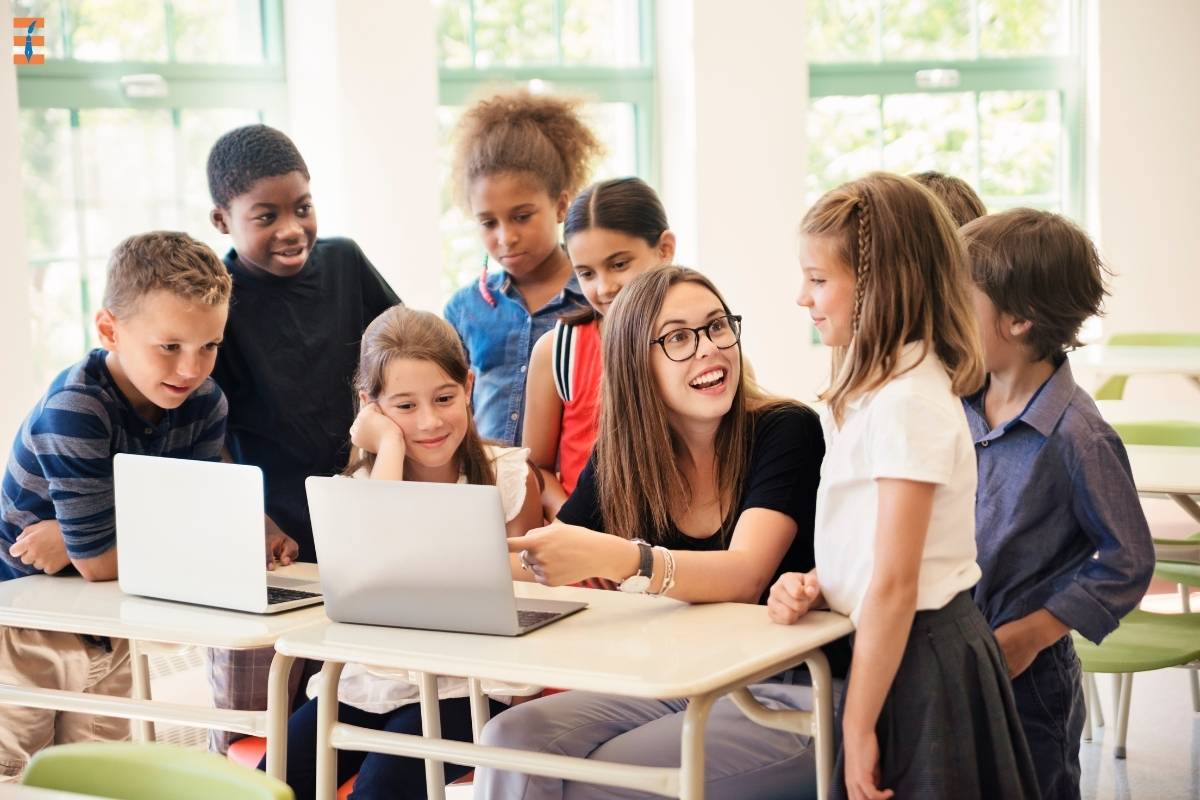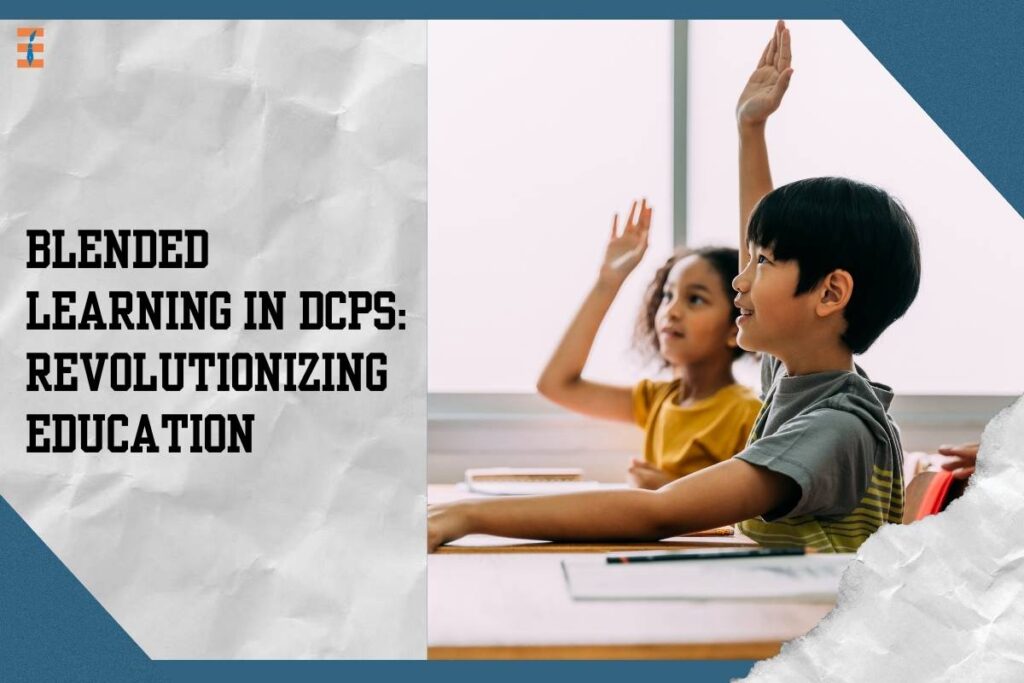In the dynamic landscape of education, the adoption of blended learning has emerged as a transformative force, particularly in the District of Columbia Public Schools (DCPS). Blended learning, a pedagogical approach that combines traditional classroom instruction with online learning components, has reshaped the educational experience for students and educators alike. In this article, we explore implementation, its advantages, and the future it holds for blended learning in DCPS.
Here are 8 Important Points On Blended Learning in DCPS:
1. Understanding Blended Learning:

Blended learning represents a departure from the traditional one-size-fits-all model of education. It recognizes the diverse learning styles, paces, and needs of students, offering a personalized and flexible approach to learning. In a blended learning environment, students have the opportunity to engage with course materials, collaborate with peers, and receive feedback from teachers both in the classroom and online. This hybrid model integrates face-to-face instruction with digital resources, enabling students to access a wealth of educational materials beyond the confines of the traditional classroom.
2. Implementation of Blended Learning in DCPS:
DCPS has been at the forefront of incorporating blended learning into its educational practices. Recognizing the potential of technology to enhance teaching and learning, the district has implemented various initiatives and programs to support blended learning. From providing students with access to digital devices and online platforms to offering professional development opportunities for educators, DCPS has made significant investments in integrating technology into the classroom.
3. Advantages of Blended Learning:
Blended learning offers numerous advantages for both students and educators. For students, it promotes active learning, collaboration, and self-directed inquiry. By combining online resources with traditional instruction, blended learning provides students with opportunities for deeper engagement and personalized learning experiences. Additionally, the integration of multimedia resources, interactive simulations, and online discussions enhances engagement and fosters critical thinking skills. For educators, blended learning allows for differentiation, data-driven instruction, and targeted intervention, leading to improved student outcomes.
4. Overcoming Challenges:
Despite its many benefits, blended learning faces challenges, particularly in ensuring equitable access to technology and digital resources. In a diverse district like DCPS, addressing the digital divide is crucial to ensuring that all students have the tools they need to succeed. To tackle this challenge, DCPS has implemented measures such as providing devices and internet access to students in need and partnering with community organizations to bridge the gap. Additionally, effective professional development for educators is essential to the successful implementation of blended learning. DCPS offers ongoing training and support to teachers to help them integrate technology into their instruction and leverage blended learning strategies effectively.
5. The Future of Blended Learning in DCPS:

Looking ahead, the future of blended learning in DCPS is promising. The district remains committed to leveraging technology to enhance teaching and learning, with a focus on equity, access, and innovation. As technology continues to advance, DCPS will explore emerging trends and technologies to further personalize instruction and improve student outcomes. With a dedication to continuous improvement and a student-centered approach, DCPS is poised to lead the way in reimagining education for the 21st century.
6. Future Challenges and Opportunities:
While blended learning has shown immense promise in DCPS, it also faces future challenges and opportunities. One significant challenge is ensuring the sustainability and scalability of blended learning initiatives. As the district continues to expand its implementation of blended learning across schools, maintaining consistent support, resources, and infrastructure will be essential. Additionally, ongoing evaluation and refinement of blended learning practices will be necessary to ensure effectiveness and relevance in meeting the evolving needs of students and educators.
Moreover, as technology evolves, so too will the possibilities for blended learning. DCPS must remain vigilant in exploring emerging technologies and pedagogical approaches to further enhance the blended learning experience. This may include the integration of artificial intelligence, adaptive learning platforms, and immersive virtual reality simulations to provide even more personalized and engaging learning experiences for students.
7. Community Engagement and Collaboration:
Another critical aspect of the future of blended learning in DCPS is community engagement and collaboration. Building strong partnerships with parents, community organizations, and local businesses will be essential in fostering support for blended learning initiatives and ensuring the success of students. By involving stakeholders in the planning and implementation process, DCPS can create a more inclusive and holistic approach to education that meets the needs of the entire community.
8. Addressing Equity and Access:

As blended learning continues to evolve, DCPS must remain vigilant in addressing equity and access issues. While technology has the potential to level the playing field and provide equal opportunities for all students, disparities in access to technology and internet connectivity still exist. DCPS must continue to invest in infrastructure and resources to ensure that all students have access to the tools and support they need to thrive in a blended learning environment.
Conclusion:
In conclusion, blended learning in DCPS represents a bold step forward in reimagining education for the 21st century. By integrating technology with traditional teaching methods, DCPS is creating a more personalized, engaging, and effective learning experience for students. As the district continues to invest in blended learning initiatives and explore new opportunities for innovation, the future of education in DCPS is bright. With a commitment to equity, access, and excellence, DCPS is paving the way for a more inclusive and dynamic education system that prepares students for success in an increasingly digital world.
FAQs
1. What is blended learning?
Blended learning is an educational approach that combines traditional classroom instruction with online learning components, offering students a personalized and flexible learning experience.
2. How is blended learning implemented in DCPS?
DCPS implements blended learning through various initiatives and programs, including providing students with access to digital devices and online platforms, offering professional development opportunities for educators, and addressing equity and access issues.
3. What are the advantages of blended learning in DCPS?
Blended learning in DCPS promotes active learning, collaboration, and personalized instruction, leading to improved student engagement and academic outcomes.
4. What challenges does blended learning face in DCPS?
Challenges include ensuring equitable access to technology and resources, providing effective professional development for educators, and maintaining the sustainability and scalability of blended learning initiatives.
5. What is the future of blended learning in DCPS?
The future of blended learning in DCPS is promising, with opportunities for continued innovation, community engagement, and addressing equity and access issues to create a more inclusive and dynamic education system.
Also Read: 10 Popular Blended Learning Resources Teachers Actually Use

